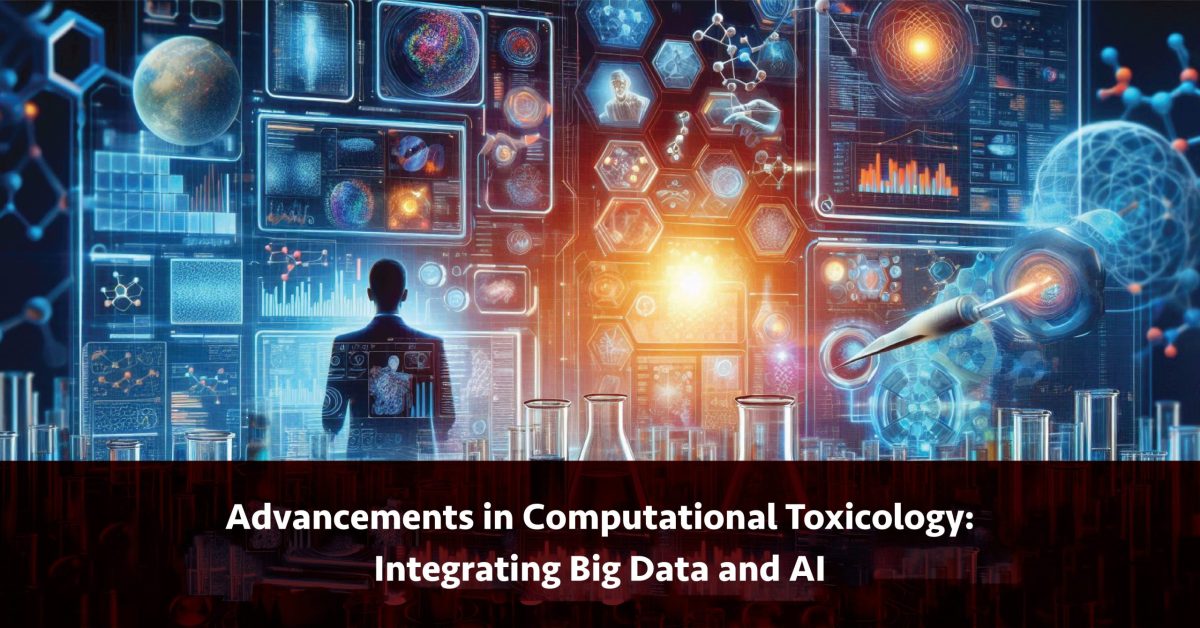Case Studies: AI and Big Data in Action
Some of the very recent works have shown AI and big data can help bring a new level of improvement to computational toxicology. For instance, deep learning models have been used in the prognostic or prediction of hepatotoxicity of drugs according to their molecular features and pharmacological properties. Through such approaches, researchers have been able to develop models that, through training on large datasets of identified toxic and non-toxic chemical compounds, have been able to attain high levels of accuracy in diagnosing drug-induced liver injury (DILI), a common cause of drug pull-outs from the markets.
In another study, the developmental toxicity of chemicals was also predicted by using the artificial intelligence-driven models that were obtained from high-screening assay data and chemical database structure. It was possible to use these models to determine the features of molecules that are linked with developmental toxicity and to understand the processes of their action. The potential to estimate developmental toxicity without involving animals is crucial since chemical testing on pregnant animals is considered unethical and/or prohibited.
In addition, work has been done using AI to look at the dose-response relationships of quantified chemical exposures and associated toxicity, including health risks. AI integration of data from various sources, for example, environmental monitoring data, toxicogenomics data, and data from epidemiological studies, can help AI models discover new associations between chemical exposures and health risks. This could revolutionize environmental health research since it is likely to produce accurate and timely risk estimates of chemical exposure.
Challenges and Future Directions
However, some critical issues have not been fully solved in computational toxicology, promoted by big data and AI. This brings us to the first of some significant problems: the quality and consistency of the data that feeds AI. Information concerning toxicity is frequently ambiguous and cannot be classified as fully scientific because this information can be obtained through highly scientific toxicological experiments or wild guesses. This variability can pose challenges when developing AI models that are used for the prediction of the toxicity of new or unknown chemicals. To tackle this challenge, there is a need to keep up. with standard procedures for data curation and validation, plus the implantation of high-quality experimental data.
They are as follows: There is a major concern with explainability and interpretability, which is the ability to explain AI models. A significant concern with using AI-derived models of various diseases, pathogens, or disorders is that these models can paint a highly accurate picture of what might happen but are not very good at pointing out the reasons why things are likely to play out in a particular way. This lack of interpretability can be a problem for the implementation of AI in the regulation field since the decision-making process requires explanations. To counter this problem, scholars are coming up with new ways of explaining the results of an A.I. model, including feature importance analysis and result visualization.
As for future development, it could be expected that the enhancement and implementation of big data and AI into computational toxicology will bring more progress to existing and novel ideas. The advancement of new and complex models of AI that will be able to take and integrate multiple data forms and mimic complex biological systems will enhance mechanistic and robust predictive analysis of chemical toxicity.
In conclusion, big data and AI integration into computational toxicology is a giant leap in the advancement of the field, as it provides new and additional ways on how chemical safety assessment can be enhanced and how public health can be better guarded. These technologies will become fundamental as the future of toxicology depends on their progressive improvement as better ways of considering the effects of chemicals in the environment.
References
1. Davis AP, Wiegers TC, Johnson RJ, Sciaky D, Wiegers J, Mattingly CJ. Comparative Toxicogenomics Database (CTD): update 2023. Nucleic Acids Res. 2023 Jan 6;51(D1):D1257-D1262. doi: 10.1093/nar/gkac833. PMID: 36169237; PMCID: PMC9825590.
2. Ciallella HL, Russo DP, Sharma S, Li Y, Sloter E, Sweet L, Huang H, Zhu H. Predicting Prenatal Developmental Toxicity Based On the Combination of Chemical Structures and Biological Data. Environ Sci Technol. 2022 May 3;56(9):5984-5998. doi: 10.1021/acs.est.2c01040. Epub 2022 Apr 22. PMID: 35451820; PMCID: PMC9191745.
3. Ciallella HL, Russo DP, Aleksunes LM, Grimm FA, Zhu H. Revealing Adverse Outcome Pathways from Public High-Throughput Screening Data to Evaluate New Toxicants by a Knowledge-Based Deep Neural Network Approach. Environ Sci Technol. 2021 Aug 3;55(15):10875-10887. doi: 10.1021/acs.est.1c02656. Epub 2021 Jul 25. PMID: 34304572; PMCID: PMC8713073.
4. Xu Y, Dai Z, Chen F, Gao S, Pei J, Lai L. Deep Learning for Drug-Induced Liver Injury. J Chem Inf Model. 2015 Oct 26;55(10):2085-93. doi: 10.1021/acs.jcim.5b00238. Epub 2015 Oct 13. PMID: 26437739.
5. Zhu H. Big Data and Artificial Intelligence Modeling for Drug Discovery. Annu Rev Pharmacol Toxicol. 2020 Jan 6;60:573-589. doi: 10.1146/annurev-pharmtox-010919-023324. Epub 2019 Sep 13. PMID: 31518513; PMCID: PMC7010403.
6. Schwalbe N, Wahl B. Artificial intelligence and the future of global health. Lancet. 2020 May 16;395(10236):1579-1586. doi: 10.1016/S0140-6736(20)30226-9. PMID: 32416782; PMCID: PMC7255280.
7. Mayr, A., Klambauer, G., Unterthiner, T. and Hochreiter, S., 2016. DeepTox: toxicity prediction using deep learning. Frontiers in Environmental Science, 3, p.80.
8. Knapen D, Angrish MM, Fortin MC, Katsiadaki I, Leonard M, Margiotta-Casaluci L, Munn S, O’Brien JM, Pollesch N, Smith LC, Zhang X, Villeneuve DL. Adverse outcome pathway networks I: Development and applications. Environ Toxicol Chem. 2018 Jun;37(6):1723-1733. doi: 10.1002/etc.4125. Epub 2018 May 7. PMID: 29488651; PMCID: PMC6004608.
9. Ciallella HL, Zhu H. Advancing Computational Toxicology in the Big Data Era by Artificial Intelligence: Data-Driven and Mechanism-Driven Modeling for Chemical Toxicity. Chem Res Toxicol. 2019 Apr 15;32(4):536-547. doi: 10.1021/acs.chemrestox.8b00393. Epub 2019 Mar 25. PMID: 30907586; PMCID: PMC6688471.
10. Wu Y, Wang G. Machine Learning Based Toxicity Prediction: From Chemical Structural Description to Transcriptome Analysis. Int J Mol Sci. 2018 Aug 10;19(8):2358. doi: 10.3390/ijms19082358. PMID: 30103448; PMCID: PMC6121588.
